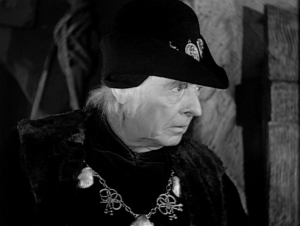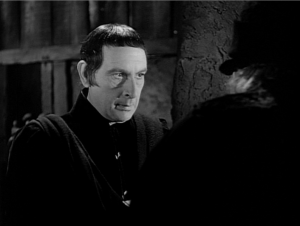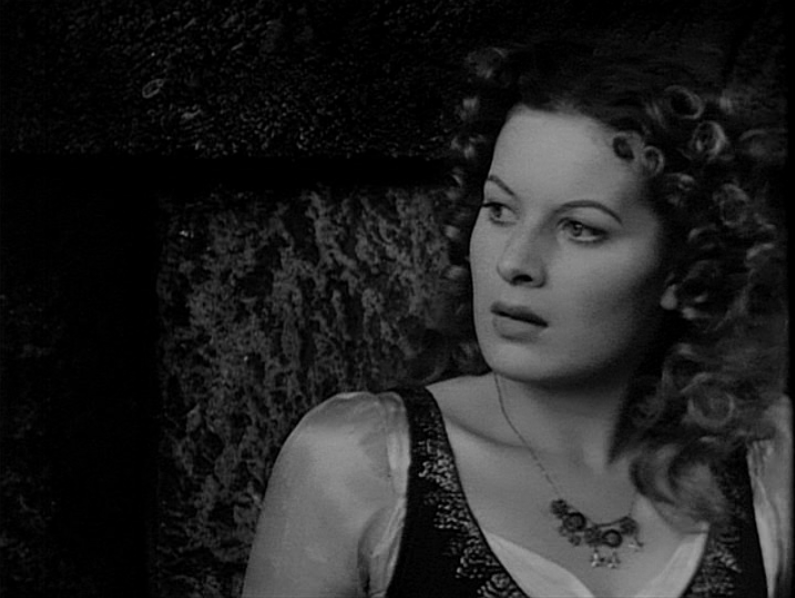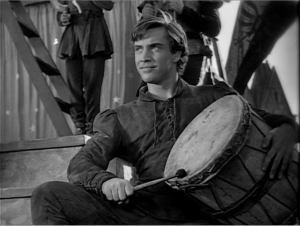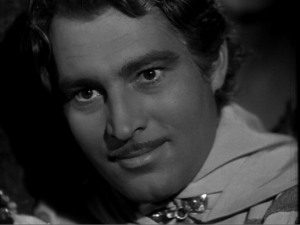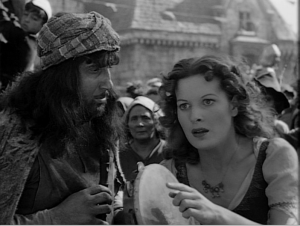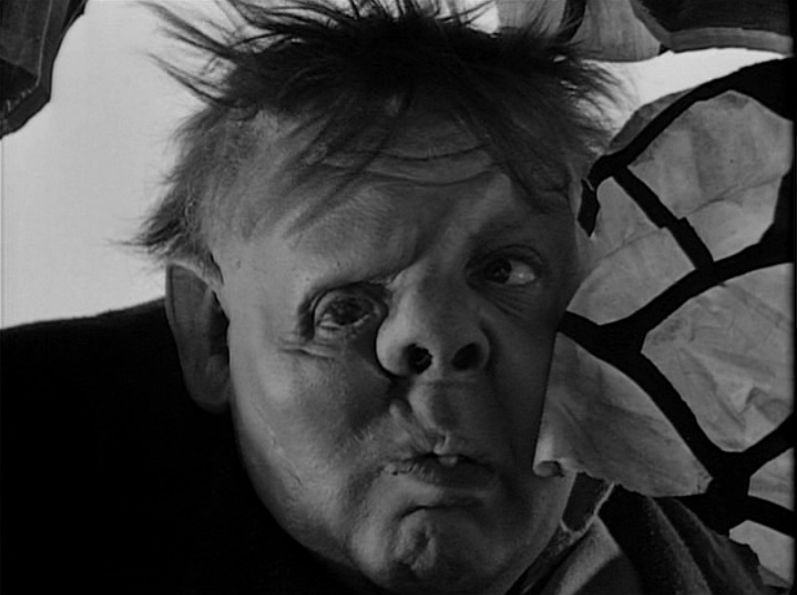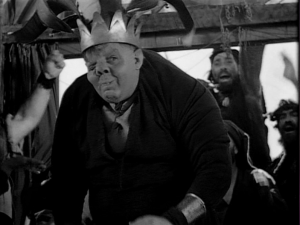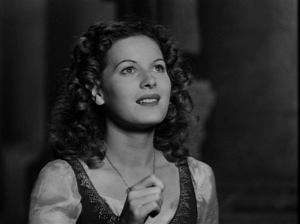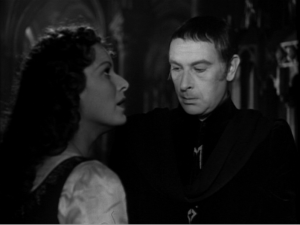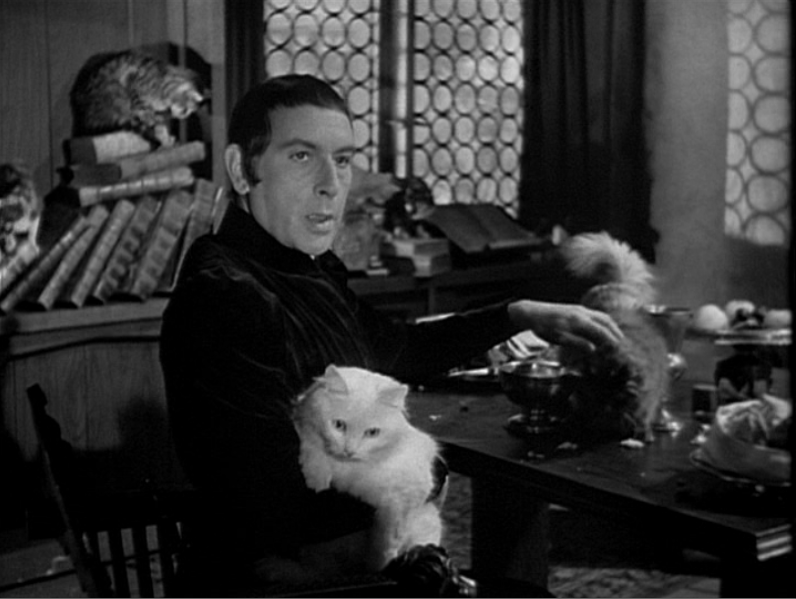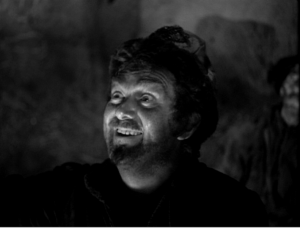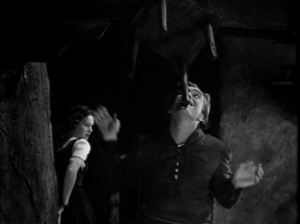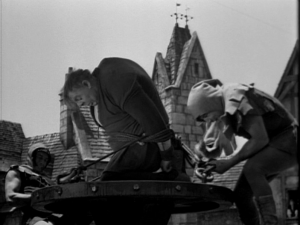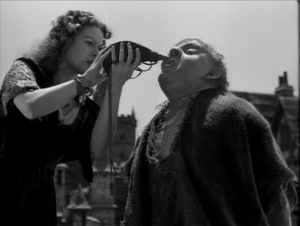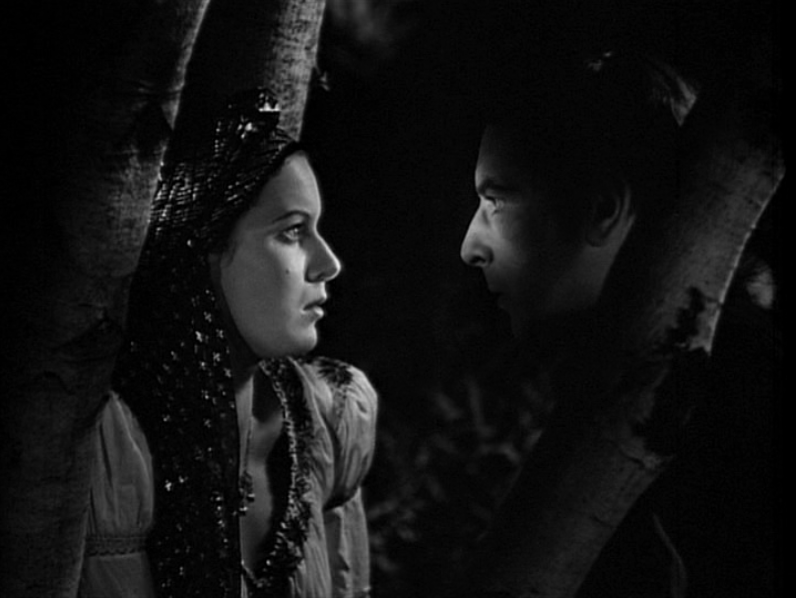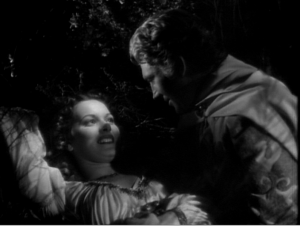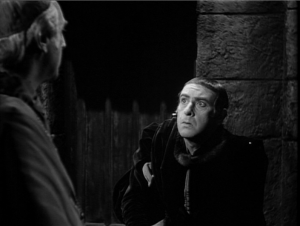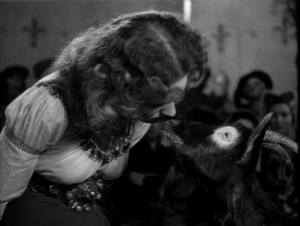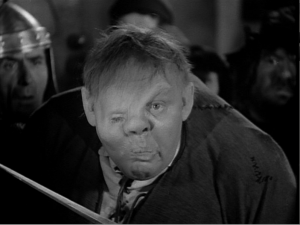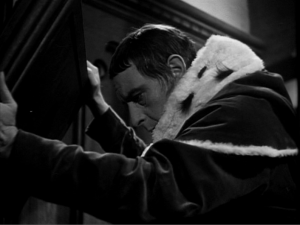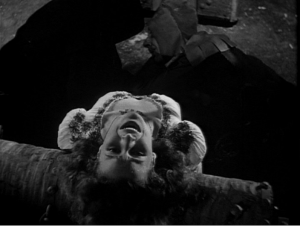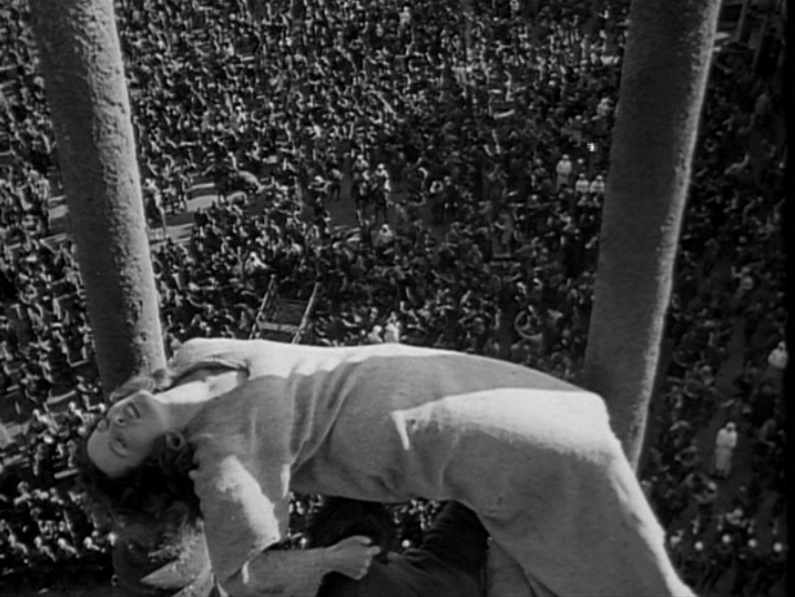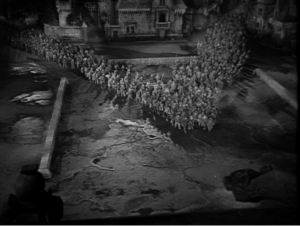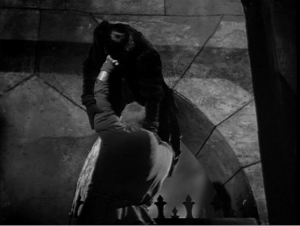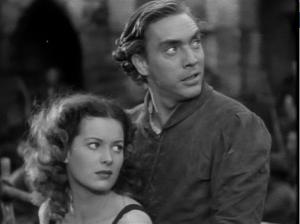The 1939 version The Hunchback of Notre Dame opens with text about the current times and how Great Louis IX is. But there is superstition /prejudice that wants to “crush the adventurous spirit of man.“.
From the get go the film tells us that in addition to Qusiamodo being a prominent character, Pierre Gringoire and King Louis XI are very important characters as they represent modernity while Frollo provides the superstition/prejudice and Esmeralda works as something for the character to fight for or against. Gringoire is also who the author (in this case Frank) identified with which is why he get more scene time and importance in film’s events.
The over-all theme of the film is the changing world and this old vs new but the overt undertones are taken from political environment of the late 30’s, (i.e the opinion of the Romani and their need for city permits in late 15th century Paris)
Despite the add-ons to the over-all story the plot is the same. King Louis (Harry Davenport) Jehan Frollo (Sir Cedric Hardwicke) Chief Justice, are a sort of odd couple.
They are forever talking of this old vs new, Louis loves it and Frollo hates it and in the opening scene they talk of the new invention, a printing press. Frollo wants to destroy it and Louis considers it a miracle. Frollo then vows he will protect France from the press as he protect it from witches, sorcerers and “Gypsies.” At that moment, Esmeralda (Maureen O’Hara) arrives in Paris so that she may speak to the king about the blight of her people.
She arrives during the Feast of Fools. At the feast a young idealist poet Pierre Gringoire (Edmond O’Brien) is performing a play that meets with harsh criticism.
In addition to the general merriment, the highlight of the festival is the crowning of the King of Fools, which is reserved for the ugliest face in Paris.
As Esmeralda dances she sees Quasimodo (Charles Laughton) the misshapen hunchback of Notre Dame staring at her, he is pulled out of hiding and is crowned King of Fools. The Feast ends when Frollo, Quasimodo’s care taker, forces him back to Notre Dame. Esmeralda is then forced to take refuge in Notre Dame because she Gypsy with out documentation.
She then encounters Frollo who find her while he is visiting his brother Claude (Walter Hampden) the Arch-Deacon of Notre dame. Frollo expresses his superstition & prejudice against the Gyspies and demand she leaves. He also demonstrates also a growing fascination with her, After seeing the good in Frollo (he likes animals, especially cats).
She asks Mary to speak to the King, Louis as it happens in Notre Dame and agrees to review her request about her people. Frollo takes Esmeralda to the bell tower because she now lives in sanctuary but flees from Notre Dame because Quasimodo frightened. She is pursued by Quasimodo while Frollo hides in the shadows, she is rescued by Gringoire and Phoebus. She is immediately smitten with Phoebus.
Gringoire then stumbles into the Court of Miracles and after almost being hanged by Clopin, (Thomas Mitchell)
Just then all the girls are arrested because of Frollo obsession with Esmeralda but just as the guards descend on the Court, Esmeralda sneaks out to see her people and tell them about the King.
Quasimodo is sentenced to 50 lashes and public disgrace. Gringoire tries to help but can’t do anything and as Quasimodo begs for water Esmeralda gives him some water and a little pity. After that Quasimodo falls in love with her.
During a party where Gringoire and Esmeralda are performing, Frollo confesses his obsession to her. She runs off and finds Phoebus, who is later murder while with Esmeralda. Frollo confesses to the murder to his brother but Claude refuses to help him.
Esmeralda is put on trial along side her goat. Gringoire tries to make the court see common sense and Quasimodo confesses to the murder. However she is tortured and despite her innocence she confesses and is sentenced to death. Louis tries to intervene on behalf of Claude but he can’t do much.
On the day her execution Quasimodo saves her and claim sanctuary.
Enraged, the nobles try remove sanctuary as Esmeralda has killed “one of them”. Clopin and Gringoire debate on the best method of saving her; words or force. Both methods are tried. Louis reads Gringoire pamphet while Clopin attack Notre dame. As Clopin attacks Notre Dame Louis discover that Frollo is the real murder. Quasimodo defends Notre Dame and is sucessful, even if the people attacking were trying to protect Esmeralda.
At his moment of victory, he finds Frollo pursuing Esmeralda and Quasimodo throws Frollo from the cathedral.
Esmeralda is then pardon and the nomads are free to live in France. As Esmeralda and Gringoire go off together while Quasimodo ask why he wasn’t made of stone.
That the plot of 1939 version of Hunchback of Notre Dame, next time plot review

